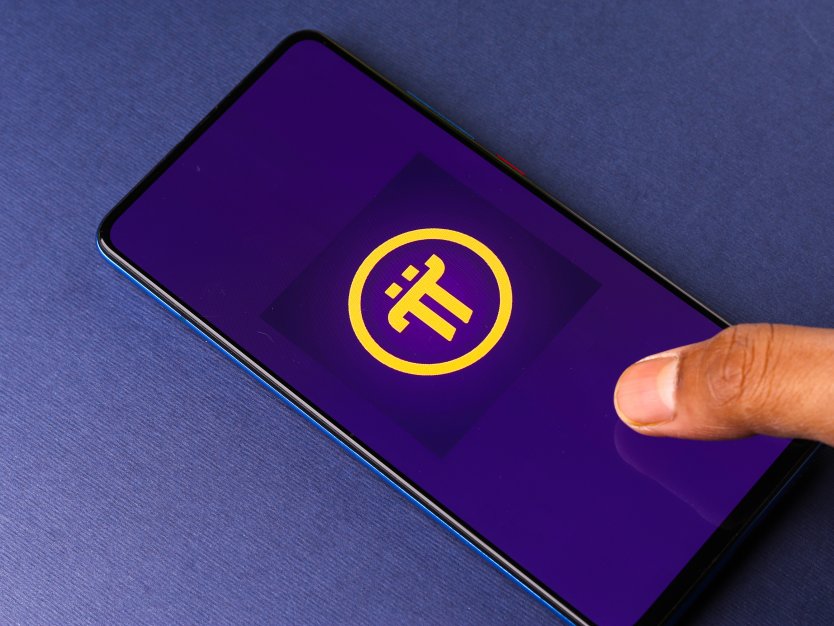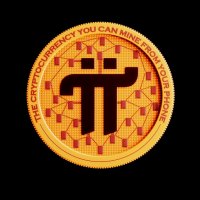How many PI coins are there? That’s hard to say
The PI coin is all about mining, but how many PI coins are there?

Contents
- The circulating supply
- The non-circulating supply
- Equations without information
- How PI compares to other cryptos
- FAQs
The Pi Network and the PI coin have attracted attention with a mobile app that aims to make crypto mining accessible for everyone. So how many PI coins are there? This is a surprisingly difficult question to answer.
The circulating supply
Right now, as of the start of February 2022, there are no PI coins currently in circulation by which we mean, none available to buy, sell or trade on the open market. This is because the coin is not available on exchanges at present. There are also no plans for an initial coin offering (ICO).
Instead, anyone who wants to get hold of the Pi Network coin will have to sign up to the app and, in order to do that, they will have to get a referral from someone who is already active on the network. This means that if you do not already know someone who is involved in mining PI, then you cannot get hold of the crypto. Because there is not yet any PI available outside of the Pi Network app, that means there is no price for the token. We do not know how much PI is worth, nor can we tell with any degree of understanding, let alone certainty, what the price might be.
The non-circulating supply
Despite the current circulation of PI standing at precisely zero, that does not mean that there are not PI coins. They are, however, only available in the PI app. While most coins with a fixed supply have a specific number of coins, PI does it differently. The network has a fixed number of PI coins per user, so rather than people effectively competing for coins, they have a certain amount of coins that are made available to each user.
However, this does not mean that everyone has the same amount of coins available for them to mine. The network has halved the number of PI people can get hold of over time. When the Pi Network first launched, the base mining rate stood at 1.6 an hour, which went down to 0.8 PI per hour once 100,000 users signed up. Another halving to 0.4 PI per hour followed when one million users started using the app and the latest reduction was down to 0.2 PI per hour when its user base went over 10 million. As soon as there are a billion people on the app, the rate will fall to zero and all the coins will be mined, at least in theory.
The problem that we face is that we do not know, precisely, how many coins have been mined because we do not know exactly how many users there are in the world. If the coin was openly traded, this would be less of a problem, because we could at least see how many coins were available on the open market and then we could work something out from there. This is a pure hypothetical, however, because, as we have already said, PI is not available on any exchange at the time of writing.
What we do know is that, on 29 November 2021, there were 29 million active users on the Pi Network, and it is the active users who do the mining. We also know that people who refer users get a 25% boost to their mining power so, again, the rate at which people mine can vary due to that. There will be people who have positions of influence, such as prominent YouTubers or Instagram stars, who will have got a lot of people signing up. There will also be people who will have had no success in bringing people along. Furthermore, there will be a good number of people who sign in, get involved with mining for a very short period of time, and then drop out of being active users. So we are in a situation where we have to make some guesses based on what little we know about the coin’s supply. We have asked the Pi Network if it can tell us, but we are yet to receive an answer.
Equations without information

The PI white paper does offer some equations but, frustratingly, these do not provide any concrete figures. It does say that the maximum supply equates to the number of total mining rewards, plus the total referral rewards, plus the total developer rewards. It says that the referral rate is 50% of the mining rewards, while the developer reward rate is 25% of the referral reward figure, but the best it can offer about the mining reward is that “for each person that joins the Pi Network, a fixed amount of Pi is pre-minted. This supply is then released over the lifetime of that member based on their level of engagement and contribution to network security. The supply is released using an exponentially decreasing function similar to Bitcoin’s over the member’s lifetime”, and that early members mine more.
It does offer a mathematical equation that says the mining reward comes to the integral number or “f(P) dx where f is a logarithmically declining function” with “P = Population number (e.g., 1st person to join, 2nd person to join, etc.)”, but, because it does not state what f is exactly, the equation is not very useful.
How PI compares to other cryptos
Bitcoin has a fixed supply of 21 billion. This means that, once the final bitcoin is mined, which is expected to happen at some point around 2040, that will be it. There will be no more new bitcoin coming onto the market. People will have to deal with the circulating supply and, because it is possible that the coin will be very much used as a store of value then, it may end up being worth more than it is now because scarcity could well be a major issue.
On the other hand, dogecoin has, at least in theory, an unlimited supply. This helps to keep the coin active, and the actual supply is maintained through burning the coin. These are two examples of things that currently do not apply to the Pi Network’s cryptocurrency because, at present, it only has a usage within the app and, because it is not available on any exchanges, we are unable to even say what the current supply is. The best statistic we can get to is, if there are 29 million active Pi Network users, and they are currently mining 0.4 PI per hour, then there are 278.4 million coins being mined every day. But that is, at best, an educated guess. Until the Pi Network itself starts being transparent about how many people are using the system and its overall tokenomics, that is the best we can do. We cannot know for sure, because Pi Network is rather secretive. Some might see the secrecy as a red flag. You will have to figure that out for yourself.
FAQs
It does, but the Pi Network is rather reticent about what the total supply is. The supply is linked to how many people are using the network, rather than being a particularly fixed number. Since Pi do not regularly update how many people are using the network, nor precisely how many coins they can mine, there is no available answer.
This is another question which, thanks to the lack of transparency provided by the Pi Network, there is no firm answer to. If, at present, every active user mines 0.4 PI an hour, and there are 29 million active users on the network, this would mean that there were 278.4 million PI mined every day. This figure, however, could easily be far too low, or far too high. Unless the network makes its statistics available, there is no certain answer.







